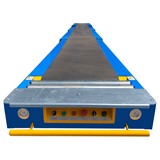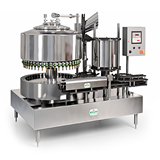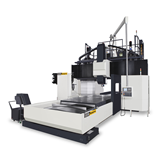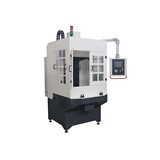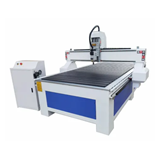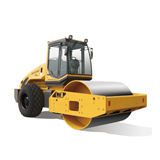Choosing the right conveyor system is critical. You want one that will best suit your specific needs, maximise operating efficiency and complement your long term strategy.
If you want to contribute to this guide, or have any suggestions, feel free to make suggestions here. We will update this article with changes as we collect them.
Characteristics of the material being handled
When it comes to selecting the type of conveyor you need, start by looking at the characteristics of the material being handled. Consider:
- Dimensions & weight of the conveyed material - The maximum, minimum, average size and corresponding weights, whether your material is consistent or will change over time.
- Type of material to be conveyed - Fragile, wet, hot, cold, loose or packaged
- Length and width of the material - This determines the width of conveyor curves and length of
accumulation zones. - Dimensions of the material - This will determine roller centers and diameter of rollers.
- Material height and centre of gravity - These will help determine guardrail requirements, maximum incline angle, etc. A steeper incline will take up less floor space for example.
- Cooling/heating requirements - The right bearings and motors must be selected to handle condensation etc. between storage and packing areas.
- Fragile items - A zero pressure accumulation conveyor will be required to keep individual items separated during handling.
- Orientation of item - In some cases you’ll need the material oriented a certain way to apply labels, read bar codes, etc.
- Live load - The average weight per metre of a material will determine the drive and motor requirements
Other things to think about
- Rates at which orders or items are being picked and introduced to the system
- Picking rate relative to packing or processing rates
- How many orders to be shipped or items to be moved over what timeframe
- Is the business seasonal, cyclical and what the peak output requirements look like versus a normal distribution of output
- Peak times within each day the system must accommodate
- Requirements for the most demanding hour of the day
- Growth projections and the system's planning horizon
Popular choices of conveyor systems
- Non powered or Gravity conveyors - An affordable solution for efficient handling. They’re typically used to move lighter items and are usually either roller/skatewheel conveyors or ball transfer tables. They can be inclined and assisted by gravity or manually pushed along by workers. Common applications include transferring boxed or flat surfaced products in a manufacturing environment.
- Powered conveyors - These are a motorised version of a gravity conveyor. When your items need to be transported at a consistent rate you'll need a mechanically powered conveyor. Live rollers are often used for light to medium packages and for your heavy and bulky items a chain drive roller system is ideal.
- Belt conveyors - These are often a rubber belt looped around drums. Other belt materials include wire mesh, magnetic belt, etc. Belt conveyors suit a large range of products from loose items and boxes to bulk material handling applications. Common applications include transporting food items from ovens to packaging, agricultural produce, grains and more industrial applications such as transporting coal
or crushed minerals over long distances. - Zero pressure accumulation conveyor - When you need to segregate products into zones or keep your products from touching each other, photo eye sensors control the roller drives to move the product between zones when required. Common applications include products that need to be manually boxed, controlling product flow so that products don’t collide at the end of the conveyor.
- Monorail conveyors - These consist of an overhead ceiling track where the product is hung and transported. They free up floor space and reduce manual handling to a minimum. They can be manually or mechanically powered. Common applications include use in abattoirs, powder coating and spray painting facilities.
- Vibrating conveyors - These use an oscillating motion to sort out free flowing material, separating weight by gravity or screening for size with mesh. Common applications include separating produce, processed food and more industrial applications like separating castings in foundries and sorting minerals in the mining industry.
- Screw conveyors - These use a rotating helical screw blade within a tube to move liquid or granular materials. Common applications include transporting grain from a combine harvester, transporting boiler ash and removing sludge in wastewater treatment.
- Pneumatic conveyors - These transport items pneumatically through a pipe system. Items transported can be free flowing such as powders and granules or placed in a carrier in the case of a money exchange conveyor. Common applications include transporting fly ash and cement or powder spill collection.
Features and characteristics to consider
- Modularity - Modules and components can be freely combined to provide customised layouts and can also be reconfigured if necessary.
- Flexibility - Conveyors that can accommodate various product sizes and widths. A conveyor may be required that can deal with today's demands and also accommodate for future growth.
- Scalability- An ideal system will incorporate both modularity and flexibility for an extensive range and/or reconfigured as needed to adapt to future needs and requirements.
- Safety - Built-in safety features to protect employees and other equipment directly interfacing with the conveyor is paramount.
- Ergonomics - A conveyor system designed with proper ergonomics increases productivity while reducing or negating workplace injuries. Each workplace is different and each system should be designed for each application.
- Reliability - Conveyors need to last the distance with minimal downtime.
- Maintainability - Easy to maintain conveyors will be most cost effective in the long run. Keep in mind the maintenance plan, costs for service, repair, parts and accessories.
- Energy efficiency - Energy efficient principles can be applied to all types of conveyors. Programming parts of the system to shut down, enter "sleep" mode, sequential or staggered start-up of motors during inactivity or to limit the peak power draw, results in significant cost and resource savings.
- Turnkey - Turnkey solutions pre-built for your specific application could be a consideration. These can save time and money during the spec and installation stage, but may mean sacrificing on future customisation.
Choosing the right supplier
With a better understanding of your needs, it's now time to find the right supplier. Here are some things to assess:
- Your timeframe and budget - can the supplier meet these needs
- Experience with your specific challenge
- Can you speak with other customers about their experience with the supplier
- How long have they been in business and do they service your location effectively
- Their financial stability and reliability. Consider a credit check and/or site visit.
- How responsive and professional have they been during the quote process - This can be a good indication of their reliability for the future
- What standards do they adhere to
- Is equipment in stock, otherwise what are the lead times
- What sort of expertise is needed to operate the equipment
- What sort of maintenance plans is provided and the costs
- Costs for service and repair
- Costs for parts and accessories
- Support availability and willingness to be a partner in developing and optimising for the future

.png)




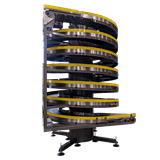



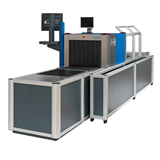


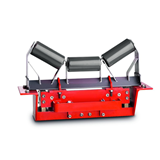
-160x160-state_article-rel-cat.jpg)
